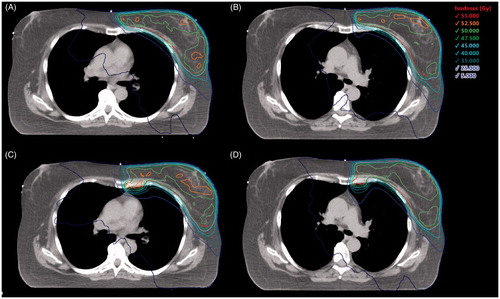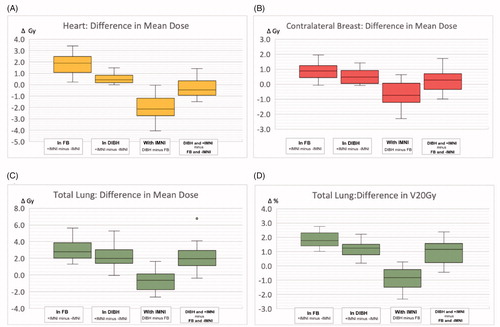Figures & data
Table 1. Definition of risk groups, overview of the risk models used for calculation of absolute risks attributed to IMNI, and references to approaches based on alternative dose metrics.
Table 2. Estimated toxicity after RNI ± IMNI.


![Figure 3. Box-plot diagrams delineating the estimated additional risk of IMNI Estimated 10-year increase of cardiac mortality attributed to IMNI for different age and risk levels compared to the published (8-year or 10 year) overall survival (OS) benefit of IMNI [Citation4,Citation6]. Estimated increase of absolute 10-year contralateral breast cancer risk (b) additional 10-year absolute risks for pneumonitis (c) or secondary lung cancer (d) due to IMNI for different age and risk levels. Baseline risks in parentheses.](/cms/asset/c1ea2dac-4b56-4f5a-8f39-bc70302c7bb1/ionc_a_1787509_f0003_c.jpg)
